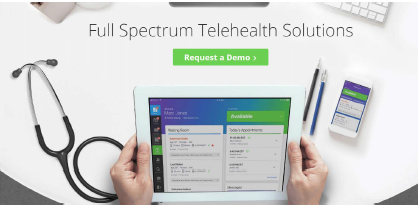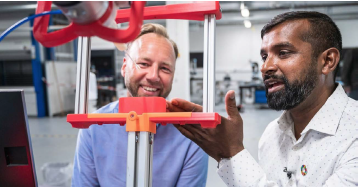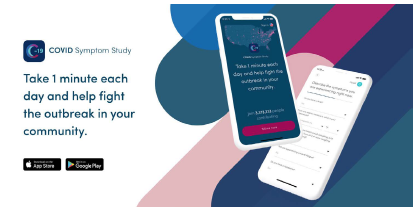Amwell Telehealth Use Swells During Pandemic
Trend Watch: Technology Rises to the Challenges of COIVD-19
 Amwell, a national telehealth company, which has been gaining app usage since the onslaught of COVID-19, has hired a new Chief Technology Officer Serkan Kutan. Mr. Kutan who comes from executive positions at Haven and Zocdoc has joined the company to lead the building and further scaling of Amwell’s national telehealth platform to serve the needs of hospitals and health systems, health plans, innovators, and patients.
Amwell, a national telehealth company, which has been gaining app usage since the onslaught of COVID-19, has hired a new Chief Technology Officer Serkan Kutan. Mr. Kutan who comes from executive positions at Haven and Zocdoc has joined the company to lead the building and further scaling of Amwell’s national telehealth platform to serve the needs of hospitals and health systems, health plans, innovators, and patients.
“I have always been passionate about leveraging technology to improve the patient and provider digital experience," Mr. Kutan says. “The pandemic required the industry to adapt to virtual care overnight, which has amplified the challenges and opportunities facing healthcare today. It’s an honor to join Amwell to support and lead this evolution at such a critical point in our industry."
Meanwhile, Amwell’s telemedicine app usage has gone up by 158% in the United States since January.
Earlier in the year, Amwell presented a webinar, Leveraging Telehealth to Address the Psychological Impact of the Pandemic, which focused on how telehealth can be used to manage the impact COVID-19 is having on the mental wellbeing of the general public, patients with pre-existing mental health conditions, and providers who are on the front lines of the pandemic.
Kinetic’s Reflex Wearable Adds Real-Time Proximity Alerts, Contact Tracing
In 2017 KINETIC launched a wearable technology and software analytics platform to reduce injuries in the workplace. With a simple software update, the company was able to turn it into a tool that facilitates social distancing and contact tracing during COVID-19. As many essential workers must labor alongside others, the wearable now provides real-time proximity alerts to workers whenever they come within six feet of each other, helping to create awareness on proper social distancing practices.
The software analytics platform was expanded to automate precise, reliable contact tracing. This tool can create a report listing all contacts and their duration, enabling employers to make the best workplace decisions to reduce the spread of COVID-19.
Eko and AstraZeneca Team Up for Cardiac Digital Health Tools
Eko has entered into a collaboration with AstraZeneca to accelerate the development of digital health tools for the earlier screening of cardiovascular diseases, including heart failure.
Through the collaboration, AstraZeneca and Eko will explore accelerating the development of Eko algorithms, enhancing clinical trials with Eko technology and potentially building new heart failure detection solutions.
In December 2019, Eko announced receiving FDA Breakthrough Device Designation for a novel ECG-based algorithm that can identify reduced left ventricular ejection fraction. This algorithm, when cleared by the FDA, will be compatible with the DUO, Eko’s handheld stethoscope and ECG device. According to the companies, the pharm giant will be looking to employ Eko’s AI-enabled algorithms in developing early detection tools, as well as to use the tech in clinical trials.
Roche, Genentech Ink Real-World Data Deal with PicnicHealth
Pharma giant Roche and its subsidiary Genentech have inked a deal with PicnicHealth, a start-up that helps patients access and share their medical records. The real-world evidence deal will allow the pharmaceutical companies to have access to PicnicHealth’s set of de-identified patient records to gain insights about certain diseases and treatments. Patients must first consent to their records being used before they are part of this research.
The deal will focus specifically on multiple sclerosis, but later down the road the companies are looking at teaming up to study Huntington’s disease, paroxysmal nocturnal hemoglobinuria, and hemophilia.
This announcement coincides with the news that PicnicHealth is launching a new scientific research platform that lets patients share their medical records with researchers.
“Our strategic partnership with PicnicHealth will allow us to better understand serious diseases and accelerate development of effective treatments tailored to the individual needs of patients," says James Sabry, head of Roche Pharma Partnering. “By combining PicnicHealth’s uniquely built and curated real-world data sets with groundbreaking science we are aiming to make personalized healthcare a reality across multiple therapeutic areas. "
Robots Perform Throat Swabs Without a Human Clinician
 A team of robotics engineers at the University of Southern Denmark have developed a device that can automatically perform throat swabs without a human clinician being in the vicinity.
A team of robotics engineers at the University of Southern Denmark have developed a device that can automatically perform throat swabs without a human clinician being in the vicinity.
The robot reaches into the throat and moves a swab against the selected tissue within. Once the sample is collected, it deposits the swab into a glass jar and screws its top closed. Performing the procedure requires a good deal of dexterity, to be sure that the patient is not injured. The robot was trained to be gentle and the few people who have already volunteered to be swabbed report no discomfort. Further trials will need to confirm the utility of the new device.
To help commercialize and manufacture the new robot, the engineers who developed it have started up a company called Lifeline Robotics. They hope to have devices out in late summer, but the technology will certainly be of use even when the pandemic is over.
App Tracks COVID-19 Symptoms from 4M People
 A smartphone app that tracks COVID-19 symptoms has collected information from more than 4 million people worldwide and is giving doctors a closer look at the different symptoms patients are experiencing. Users can input their own health information and get statistics on those also participating around their area.
A smartphone app that tracks COVID-19 symptoms has collected information from more than 4 million people worldwide and is giving doctors a closer look at the different symptoms patients are experiencing. Users can input their own health information and get statistics on those also participating around their area.
The COVID symptom study was created at Massachusetts General Hospital, the Harvard T.H. Chan School of Public Health, King’s College London, and Stanford University School of Medicine, working with ZOE — a health science company.
Analysis of data from the COVID Symptom Study app reveals that there are six distinct “types" of COVID-19, each distinguished by a particular cluster of symptoms. Moreover, the team found that these types differed in the severity of the disease and the need for respiratory support during hospitalization.
The findings have major implications for clinical management of COVID-19 and could help doctors predict who is most at risk and likely to need hospital care in a second wave of coronavirus infections.
CVS Survey: Patients and Providers Open to Telemedicine
CVS Health 2020 survey results show a growing interest in telemedicine among both patients and providers. The Path to Better Health Study was conducted in March 2020, just as the COVID-19 pandemic hit the United States. Now more than ever, both patients and providers believe telemedicine can improve healthcare. The report found:
32% of patients said they were more likely to communicate with a healthcare professional if they had access to telehealth services, up 13%.
Patient interest in virtual appointments using a video conferencing platform rose by nine points to 29%.
The likelihood of using digital messaging to communicate increased to 48%, up 4% since last year.
Providers who find telehealth services valuable for communicating with patients increased to 40%, an increase of 18% since the 2019 study.
One thousand adult consumers and 400 physicians, nurse practitioners, and other healthcare providers participated in the survey. In addition to digital health, topics included whole-body health care, accessibility, affordability, and public health.
Video Laryngoscope Aids Intubation
COVID-19 patients who are in critical condition in intensive care units need intubation, but each patient varies; some can take a minute or more during intubation, potentially leading to fatal consequences.
Nihon Kohden is launching its NK AWS-S200 video laryngoscope in the United States under the Pentax brand outside the United States. This device is designed to achieve intubation faster and on the first try.
Furthermore, the company claims the product “can help protect clinicians while intubating patients suffering from COVID-19 or other respiratory infections."
The company reports the device can help clinicians intubate patients with even difficult airways in 22.9 seconds, well below the 30-second threshold suggested for intubations and up to 33 seconds faster than other devices.
The NK AWS-S20 features a high-definition color display targeting crosshairs that help deliver the working end into the airway. A functioning channel allows for the endotracheal tube to be pushed while viewing the airway properly.(PV)


















